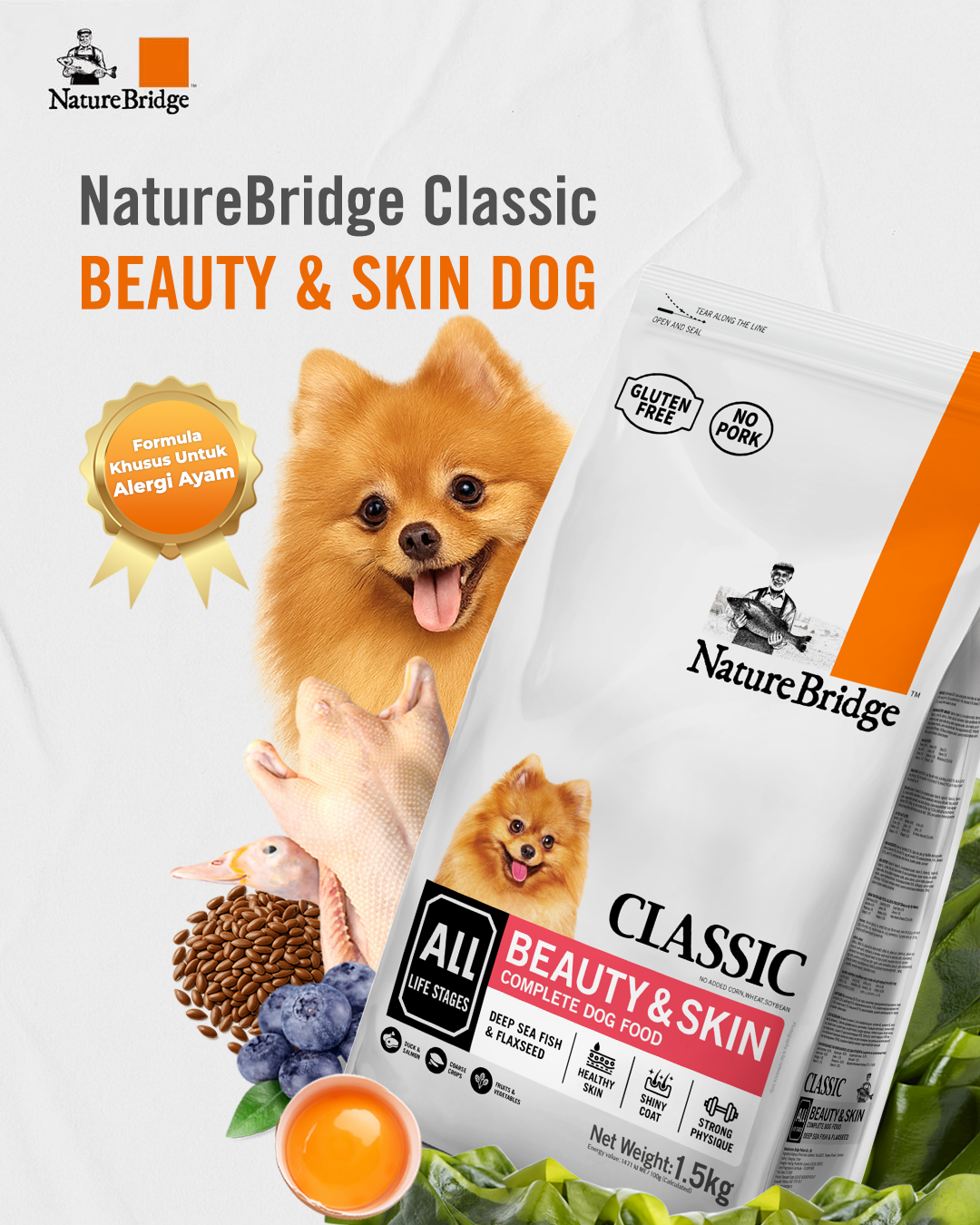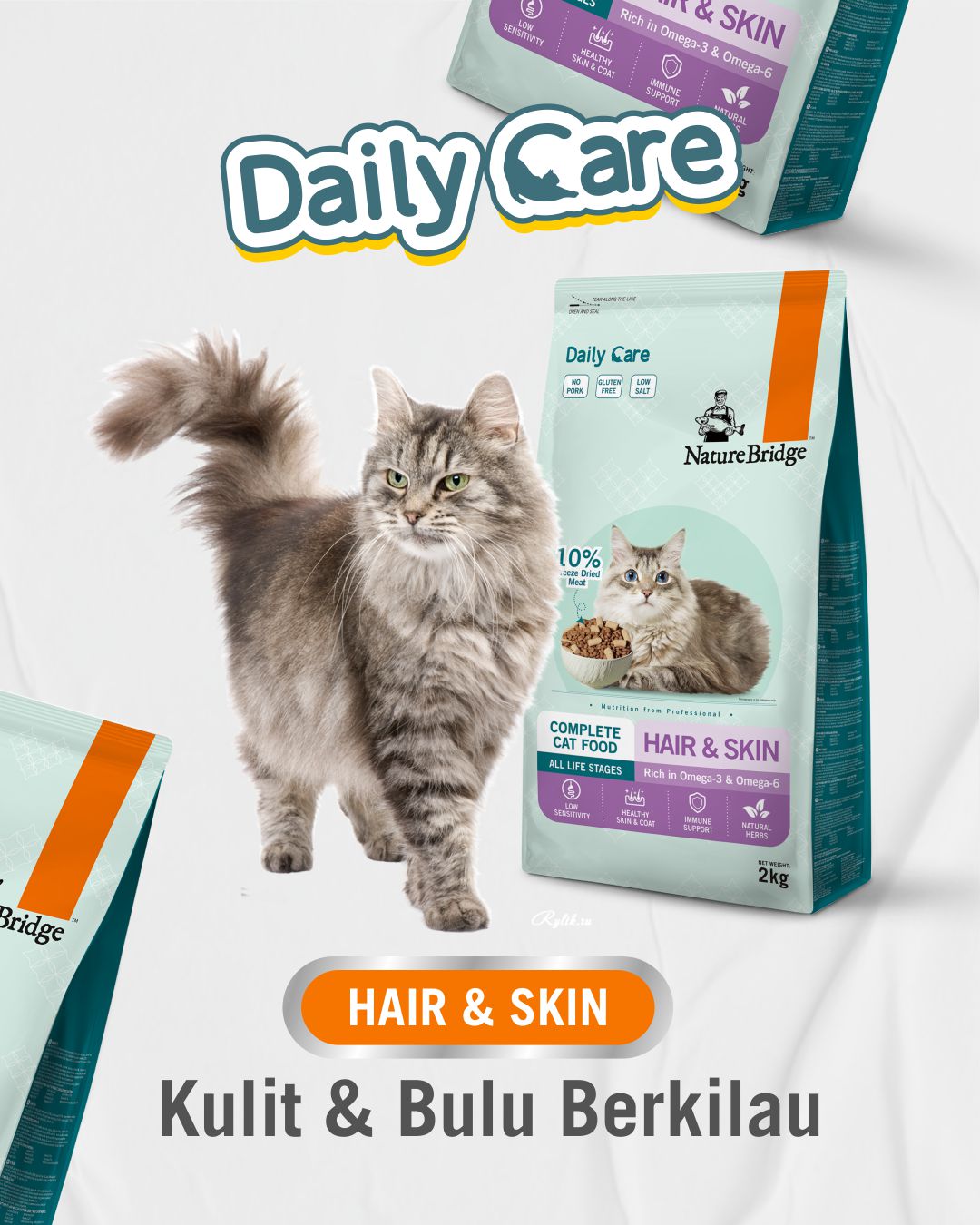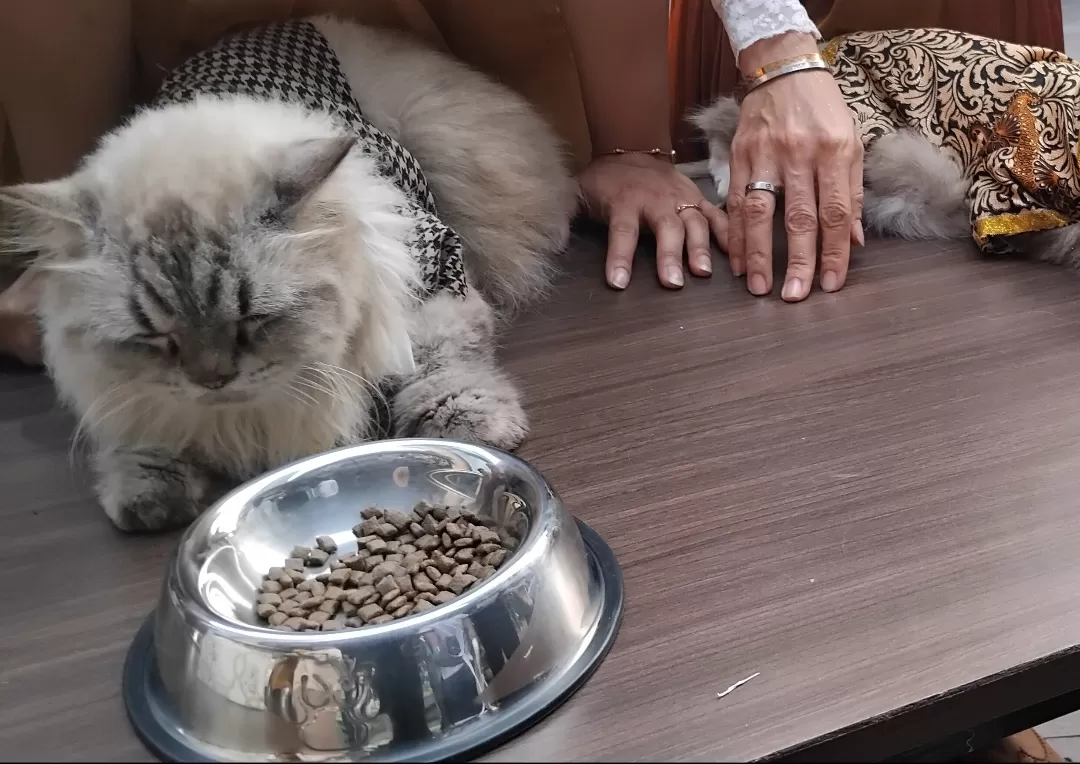A glossy coat and healthy skin aren’t just about looking good — they’re signs of a pet that’s thriving inside and out. Whether you have a fluffy Persian or a sleek Doberman, regular care is essential to prevent dryness, irritation, and skin-related diseases.
The health of your dog or cat’s skin and coat is influenced by multiple factors: diet, grooming habits, environment, and even allergies. Omega-3 and Omega-6 fatty acids, often found in quality pet food or supplements, play a huge role in keeping fur soft and skin moisturized. Poor nutrition, on the other hand, often leads to dull coats and flaky skin.
Routine grooming helps remove dead hair, distributes natural oils, and allows you to catch early signs of skin problems like hot spots, rashes, or parasites. Dogs generally need baths every 2–4 weeks depending on breed and activity level, while cats (especially long-haired ones) benefit from brushing several times a week — even if they groom themselves.
If you notice excessive itching, redness, bald patches, or a greasy, smelly coat, don’t ignore it. These could be signs of allergies, fungal infections, or underlying conditions that need veterinary attention. Early action prevents discomfort and costly treatments later on.
Tips for Healthier Skin & Coat:
Feed a high-quality diet rich in Omega-3s (e.g., fish oil).
Brush regularly based on coat type — short hair needs less, long hair needs more.
Use pet-safe shampoos (avoid human products).
Add a humidifier during dry seasons to reduce skin flakiness.
Keep up with flea and tick prevention year-round.
Conclusion: Beauty Starts with Health
A silky coat and itch-free skin are more than just aesthetic — they’re indicators of a happy, healthy pet. With consistent care, proper nutrition, and a watchful eye, your furry friend can shine from the inside out.
That's why NatureBridge provides daily food specifically for healthy skin and coat. This dry food is enriched with herbs, antioxidants, and animal protein that won't cause allergies in your pet's skin. Available in NatureBridge Classic Beauty Cat and NatureBridge Beauty & Skin Dog. Help maintain your pet's healthy skin and coat. Get NatureBridge at the official Nature Bridge Indonesia store or the official CPPETINDO store.
You are what you eat — and that’s just as true for your pets! A dull coat, dry skin, or constant itching could all be signs that your dog or cat isn’t getting the nutrients they need. The good news? A few smart choices in their diet can make a huge difference in skin and coat health.
The stars of the show are Omega-3 and Omega-6 fatty acids. Found in fish oil, flaxseed, and some meats, these nutrients help reduce inflammation and improve skin moisture and fur shine. Many high-quality pet foods already include these oils, but they can also be added through supplements — especially if your pet has dry or flaky skin.
Protein quality matters too. Hair is 90% protein, so feeding your pet a diet rich in digestible animal proteins (like chicken, turkey, lamb, or fish) supports fur strength and growth. On the flip side, low-quality fillers (like corn or soy byproducts) may contribute to allergies or coat issues in sensitive pets.
Don’t forget about vitamins and minerals. Zinc, Vitamin E, and biotin all play key roles in maintaining skin integrity. If your pet is on a home-cooked or raw diet, make sure it’s well-balanced — nutrient deficiencies can lead to coat thinning, shedding, and poor skin resilience.
Tips for Feeding Your Pet’s Skin & Coat:
Look for foods with labeled Omega-3s like salmon oil or fish meal.
Avoid overprocessed treats — they often lack real nutritional value.
Use supplements only under vet guidance (too much can cause imbalances).
Keep your pet hydrated — skin needs moisture from the inside out.
Stick to one high-quality brand to avoid triggering food allergies.
Conclusion: Beauty Starts in the Bowl
If your pet’s coat has lost its luster or their skin seems irritated, it might be time to look at what’s in their bowl. With the right nutrients, your dog or cat’s fur can be soft, shiny, and full of life — just like them! Feed smart, and you’ll see (and feel) the difference in no time.
Give your cat the boost they deserve with NatureBridge Daily Care Hair & Skin for All Stages Cat — specially formulated with Omega-3s, Omega-6s, and essential vitamins to keep their coat silky and skin healthy. 🐾 Available now at our official store and pet shops across Indonesia. Your cat’s best look starts here!
INDOZONE.ID – A cat's fur is a crucial part of its body. Without fur, a cat would feel cold, look thin, and appear unkempt.
Fur on cats serves several purposes: protecting the body, regulating temperature, providing distinctive color, repelling water, shielding against sunlight and rain, protecting the skin, functioning as a sensory tool, providing warmth, preventing infections, and acting as a reservoir for keratin and protein.
Here are some ways we can prevent fur loss in cats. Let’s dive in!
1. Bathing Cats Regularly
To maintain a cat's cleanliness, it’s important to bathe them regularly. According to the National Cat Groomers of America, cats need to be bathed at least once every 4–6 weeks.
To prevent them from getting cold, make sure to bathe cats when the environment is warm, ideally between 10:00 AM and 4:00 PM.
2. Regularly Brushing a Cat's Fur
Brushing a cat’s fur not only prevents hair loss but also helps remove dirt, dead fur, skin flakes, fleas, and oil.
Additionally, brushing stimulates blood circulation and improves overall skin health.
This activity should be done at least once or twice a week to maintain the cat's health and prevent hair loss.
Older cats, in particular, may not be able to groom themselves properly, so brushing their fur can be a great help.
3. Ensuring the Cat Stays Hydrated
Water is essential for all living beings, including cats. Just like humans, if a cat doesn’t drink enough water, it can experience dehydration.
When dehydrated, certain bodily functions may be disrupted.
One area affected is the skin, which can become dry and lead to fur loss.
To prevent hair loss, ensure your cat drinks enough water daily.
4. Adjusting Their Diet
Diet plays a significant role in the health of any living creature, including cats.
Through food, cats receive the nutrients their bodies need. A cat’s fur condition is also influenced by the food it consumes.
A diet rich in protein is essential for cats.
Protein is the primary nutrient for hair formation. Thus, protein-rich foods are vital for maintaining a cat’s healthy fur.
Jerry Xu, the owner of Bridge PetCare, explained that his company’s cat food is made using “freeze-dried” technology, where real meat is frozen at a temperature of -38°C for 26 hours.
“With the introduction of NatureBridge Daily Care, we hope pet owners and their beloved pets can live healthier, happier lives, and grow old together,” said Jerry Xu during an event in Jakarta on Thursday (July 25, 2024).
(Source: https://life.indozone.id/news/434907981/bulu-kucing-peliharaan-rontok-dan-alami-sulit-buang-air-kecil-ini-solusinya)
Ringworm is a common skin infection in both dogs and cats. The name is a bit misleading since ringworm is not caused by a worm but by a common fungus found everywhere in the world. And, many times, the infection is not ring-like at all but can take on a variety of appearances.
Ringworm infection, or dermatophytosis, can spread from pets to their human companions. The good news is that ringworm rarely causes serious problems in animals or their people, and it is both treatable and preventable. As pet owners, it’s important to know the common signs of ringworm infection as well as understand the facts about this disease.
Ringworm Isn’t Just One Fungus
Several species of fungi can cause ringworm in pets. In dogs and cats, the majority of cases are caused by Microsporum canis. Microsporum gypseum and Trichophyton mentagrophytes are responsible for the rest.
Infected Pets Are Generous and Like To Share With Others
Infected pets can transmit ringworm to people or other pets. There have even been reports of cows, goats, pigs and horses passing ringworm to people!
Many studies have shown that children are most likely to get ringworm from a pet, due to a combination of closer contact with their pets and hygiene.
Pocket pets also can get ringworm, with Trichophyton mentagrophytes responsible for almost all documented cases. Known species infected include guinea pigs, gerbils and hamsters.
The literature is sparse about potential transmission between pocket pets and dogs and cats, but given that the most common organisms responsible differ between species, it’s unlikely transmission occurs.
Some Breeds of Cats and Dogs May Be More Susceptible
Although there is no sex or age predisposition to infection, Persian, Himalayan and Rex cats, and Yorkshire and Jack Russell terriers, are overrepresented in published studies looking at the dynamics of ringworm infections.
Although Ringworm Fungi Are Everywhere, There Are Conditions That Predispose a Pet to Infection
These include:
- Dogs used for hunting and working dogs
- Stress and concurrent illnesses in adult animals
- Overcrowding and unsanitary conditions in the home
- Microtrauma to the skin for any reason
- Group housing situations
Interestingly, in cats, many studies have shown that infection with feline immunodeficiency virus (FIV) or feline leukemia virus (FeLV) alone does not increase risk of disease.
Skin Lesions Mimic Other Diseases
A good medical history for your pet can help your veterinarian make a diagnosis of ringworm. Skin abnormalities in a newly acquired pet, especially if accompanied by skin lesions on a pet owner or other member of the household, are common historical findings.
Common physical examination findings include:
- Areas of hair loss
- Areas of scaling and crusts (in cats it can take the appearance of cigarette ash)
- Broken hairs
Itchy skin is not a common feature in cats and dogs but can occur.
Some infected cats and dogs have no clinical signs but can spread the disease to other pets. Your veterinarian might advise testing asymptomatic pets sharing an infected pet’s space, particularly if the disease recurs.
Unfortunately, similar signs are seen with other common skin diseases of cats and dogs, such as superficial bacterial skin infections, mites and allergies. Additional testing is needed to sort through all these potential diagnoses.
Diagnosis Requires Specialized Tests
Once a veterinarian suspects a pet might have ringworm based on history and physical examination, a few specialized tests are needed to confirm the diagnosis.
One common test is to use a specialized type of UV light called a Wood’s lamp. M. canis glows when exposed to the particular wavelength of UV light produced by a Wood’s lamp.
Another test that your veterinarian can do in their clinic is examination of hair and skin under the microscope. Studies suggest that 85% of ringworm infections, regardless of which type of fungus is present, can be confirmed this way.
In cases where a diagnosis is not confirmed by either of these tests, a fungal culture is needed to definitively diagnose ringworm. Results can take from a few days up to four weeks.
Treatment Includes Both the Pet and the Environment
Although the vast majority of ringworm infections resolve on their own, most veterinarians recommend treatment to decrease duration of infection and to reduce the chance of spread to other pets and people.
Therapy for pets includes topical therapy and oral medication. There are lots of treatment options and your veterinarian will work with you to decide which medications are best for your pet.
Diligent and thorough environmental decontamination is a crucial part of treatment. Without adequate cleaning, reinfection can occur and the disease can spread further. Your veterinarian will work with you on specific measures but keeping areas hair-free, washing areas frequently, deep cleaning carpets and washing a pet’s bedding daily are essential. Many owners find it easier to keep an infected pet in an area that is easy to clean. However, simply keeping a pet in a kennel is not recommended.
Many pets respond to treatment quickly, sometimes within a week or two. Your veterinarian can monitor therapy using a Wood’s lamp or fungal culture. Most pets are completely cured in four to eight weeks.
The good news is that almost all pets and people recover completely with no long-term effects. People who have any skin lesions they think could be ringworm should seek advice from their doctor about treatment.
Recurrent or lingering infections are usually due to treatment failure, either through inadequate duration of therapy or failure to properly decontaminate the environment.
Is Prevention Possible?
Although it can be difficult, there are steps pet owners can take to prevent an infection from getting a foothold in their house. Having a thorough physical examination, including a Wood’s lamp evaluation, on all new pets can help. Isolating new pets added to a home (but again, not kenneling them) can help not only prevent ringworm from spreading but also allow time to detect other diseases. As always, practicing good hygiene when interacting with a new pet is essential.
Morris Animal Foundation is dedicated to improving animal health through science and also by providing resources for pet owners to learn more about important diseases that can impact health and well-being. Browse our website to learn more about what the Foundation is doing to improve the health of animals around the world.
How many of us have given our dogs a scratch and seen a rear leg start moving? Or you’ve heard the jingle jangle of a collar as a back paw comes up to scratch an itchy neck. Although dogs experience the occasional itch (just like we do), as pet owners it’s important to recognize when an itch is an indication of a more serious problem.
"Itch can sometimes be mistaken as normal behavior by pet owners," said Dr. Linda Messinger, a Denver-based, board-certified veterinary dermatologist. "I find this especially true with dogs that lick or chew their paws. Many people feel this may be normal grooming, a soothing activity or a habit, when in fact it may be a sign of underlying allergies. Itch can be displayed in many different ways, including scratching, biting, chewing, rubbing and scooting. Itchy pets are uncomfortable – something we don’t want for them."
What are the top causes of itchy skin in dogs? According to veterinary dermatology experts (and considering some regional differences), the top five disorders, listed from most common to least common "itchy" diseases in dogs are:
- Flea allergy dermatitis/flea bite hypersensitivity
- Allergies to environmental allergens (like pollen)
- Bacteria/yeast infections of the skin (including the ears)
- Food allergies/adverse food reactions
- Ectoparasites other than fleas (sarcoptic mange, also known as scabies, is most itchy)
As pet parents, we want our dog friends to be healthy and comfortable. Not all itching and scratching is normal, and getting our pets evaluated for skin disease early can help avoid more serious skin problems, such as secondary skin infections. Many allergic diseases are treatable and have an excellent long-term prognosis, especially if diagnosed early.
Itching in dogs is not a new problem. Morris Animal Foundation has been a leader in funding research on allergy and itching since 1957, when we funded one of the first studies to categorize skin disease in dogs. Since then, we’ve supported 20 additional projects focused on many causes of itching in dogs, from environmental allergies to mange.
One of our newest projects will leverage the power of the Golden Retriever Lifetime Study cohort to take a deep dive into improving our understanding of itching and allergy. Using a series of questions developed by the University of Nottingham for the Itchy Dog Project, the Study team is collecting information that will provide new data for researchers. Since launching in June 2022, just over 200 participants have responded to the questionnaire. The Study team will continue data collection for one year before analyzing the findings. We can’t wait to see what they discover!










